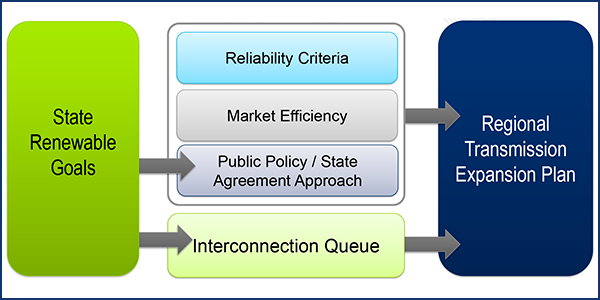With Virginia, Maryland and New Jersey committed to building almost 10 GW of offshore wind, PJM is dusting off a never-used mechanism that would allow states to pay for transmission needed to achieve public policy goals.
FERC approved PJM’s “state agreement approach” in the RTO’s first Order 1000 compliance filing in 2013, saying it was “supplemental to PJM’s proposal to consider transmission needs driven by public policy requirements, and not needed for compliance.”
The approach allows individual or groups of states to submit a transmission project for study by PJM, even if it does not qualify as a reliability or market efficiency initiative under the RTO’s Tariff. The project would be included in the Regional Transmission Expansion Plan as a supplemental project or baseline state public policy project — which could trigger a competitive solicitation — if the states agree to pay for it.
During a presentation at the Planning Committee meeting Tuesday, Mark Sims, infrastructure coordination manager, cited several types of projects that could use the approach, including meeting renewable energy goals, emission reduction, grid hardening and supporting electric vehicles.
Because the state agreement approach has never been deployed, Sims said PJM officials thought it would be beneficial to provide stakeholders with education on it. The presentation came a week after the RTO’s announcement of its new State Policy Solutions group. (See PJM to Work with States on Policy Goals in New Group.)
Sims said the state agreement approach is addressed in Schedule 12 (B) of the Tariff, Manual 14B and Schedule 6 of the Operating Agreement.
Sue Glatz, PJM director of infrastructure planning, said many generation public policy projects have been developed through the generator interconnection process. “That will continue in the future,” she said. “However, there are other routes that can be [taken], and that’s what we’re talking about today, recognizing that some of these public policies now may be on a larger scale.”
Glatz noted that FERC has scheduled an Oct. 27 technical conference on offshore wind. The commission said it will “discuss whether existing commission transmission, interconnection and merchant transmission facility frameworks in RTOs/ISOs can accommodate anticipated growth in offshore wind generation in an efficient and effective manner that safeguards open-access transmission principles.” (See FERC Announces Tech Conferences on Carbon, OSW.)
Maryland last year approved an offshore wind target of 1,200 MW by 2030. In March, Virginia lawmakers approved a target of 5,200 MW by 2034. In 2018, New Jersey lawmakers set a target of 3,500 MW by 2030; Gov. Phil Murphy issued an executive order last November to increase the target to 7,500 MW by 2035.
Gregory Carmean, executive director of the Organization of PJM States Inc., emphasized that the state agreement approach is one avenue available to the states but was not approved by FERC as meeting PJM’s obligation under Order 1000 to plan transmission for public policy needs.
“FERC has said that’s a supplemental process. It’s nice [if] the states want to do that, but that doesn’t meet [PJM’s] Order 1000 obligations,” Carmean said.
Sims said PJM plans on conducting at least two more informational sessions on the state agreement approach, including one in August and September.
“We want to introduce the [state agreement] topic today and get feedback on what there may be questions about,” Glatz said.



